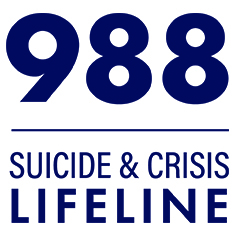How Far We’ve Come
July 03, 2012

I entered the field of suicide prevention in 1996 when, after fourteen years as a civil servant with the Department of the Army, I joined the U.S. Senate first as a fellow and then as a staffer. I attended a U.S. Senate Aging Committee hearing on mental health and the elderly with my then-boss, Senator Harry Reid (D-NV). While preparing for the hearing I called the Nevada state aging director and asked what some of the mental health issues facing the elderly were. To my surprise, I was told that suicide among older adults was a key concern. I set to the task of preparing a briefing for the senator, including key information on suicide and the elderly in the background material. On the day of the hearing, while listening to powerful testimony from Mike Wallace on his own battle with clinical depression, Senator Reid said that if Mr. Wallace could share his personal struggle with depression, he felt he should share his own personal story that his dad had taken his own life many years earlier. It was a powerful moment and, from my perspective, a significant day for suicide prevention in the public policy arena. It was also the day that my professional interest in suicide prevention began. It was clear to me that there was little being done on the national level about this leading cause of death and I had the privilege of working for a man who was willing to bring attention to this issue. Senator Reid’s leadership and personal story that he shared that day contributed to changes that have influenced my professional life and have influenced a nation ever since.
One concrete outcome of that hearing was Senator Reid’s request to hold a hearing on senior suicide in a subsequent U.S. Senate Aging Committee hearing. Another outcome was that after meeting with advocates for suicide prevention, Senator Reid introduced Senate Resolution 84, which simply stated that suicide was a national problem, warranted a national solution, and called for the development of a National Strategy for Suicide Prevention. To my amazement, Senate Resolution 84 passed unanimously the day it was introduced, and a similar resolution, House Resolution 212 introduced by Representative John Lewis (D-GA), passed several months later in the U.S. House of Representatives. This would not have been accomplished without the involvement and investment of many professional and citizen groups, especially survivors of the suicide of a loved one. I remember how proud I was back then to see this initial policy response regarding suicide prevention by our national leaders in the U.S. Congress for an issue that, for far too long, had received little attention.
Now fast-forward sixteen years to June 20-22, 2012, when I had the pleasure of attending the annual DoD/VA Suicide Prevention Conference in Washington D.C. with over one thousand others who care deeply about suicide prevention and the impact of suicide on the men and women who serve, or have served, this nation. I witnessed three Cabinet Secretaries attend the conference and speak eloquently about suicide prevention and their commitment to do whatever it takes to make sure that the men and women who serve and protect the freedoms we all enjoy have the services they need to address their often invisible wounds of war. First, we heard the Honorable Eric K. Shinseki, Secretary of Veterans Affairs, speak to the attendees on Wednesday. I found his remarks heartfelt and inspiring. There was no doubt in my mind that Secretary Shinseki is determined to support suicide prevention efforts in the VA. On Friday we heard from the Honorable Kathleen Sebelius, Secretary of the Department of Health and Human Services, and the Honorable Leon E. Panetta, Secretary of Defense. Both of them spoke of their commitment to continue to bring the resources of their departments to address the complex issue of suicide (find a copy of the speech transcripts here: Secretary Shinseki, Secretary Sebelius, and Secretary Panetta). As I write this blog this evening I can’t help but reflect on the significance of having three Cabinet Secretaries attend this conference and speak about this nation’s commitment to serving the men and women who serve this nation and to the prevention of suicide. I dare say I don’t think this has happened before, and it is an advancement and milestone well worth noting.
I remember so vividly in 1996, when the current effort to advance public policy support for suicide prevention began, how few references could be found on suicide prevention in the Congressional Record. This week, we witnessed three Cabinet Secretaries speaking passionately on the issue. I can only pinch myself and reflect on how far we’ve come and what this progress represents. I cannot say loud enough how inspired, proud and honored I am to have been a participant at this DoD/VA Suicide Prevention Conference. I feel our field has made tremendous advances in serving those in need and we should honor the many, many pioneers who came before, and be grateful to the countless dedicated men and women who dedicate their lives to reducing the burden of suicidal behavior each and every day. While we have far to go, we have traveled far and should pause to acknowledge this progress.
I am reminded of the health policy model put forward by Richmond and Kotelchuck in 1991. The model identifies 3 essential components for advancing public health policy: knowledge base, social strategy, and political will. For health policy to advance, all three components were essential (see reference below). If we look closely at where our nation is today, and certainly as reflected at the DoD/VA Suicide Prevention Conference this week, we have political will as demonstrated by the attendance and remarks of these Cabinet Secretaries. We heard many presentations on the many new advances in treatment, programs and awareness in suicide prevention reflecting the strength and growth of our knowledge base and we spoke of specific military service strategies, and the overall directions of both DoD and VA, representing the reality that we have well-thought-out social strategies in place to guide this important work.
What was especially reassuring to me was that there were many attendees from both the DoD/VA sectors, as well as many from the public and private sectors dedicated to advancing suicide prevention in the nation. What I heard from many is that this is not just a DoD challenge or a VA challenge, but that this is an American challenge, and it will take all of us and all of our wisdom, experience and talent to muster the will, the knowledge and the strategy to reduce the burden of suicidal behavior among our men and women who serve, our veterans, their families, and indeed, the nation at large.
Sincerely,

Jerry Reed, Ph.D. MSW
Director, SPRC
Richmond, J. B., & Kotelchuck, M. (1991). Co-ordination and development of strategies and policy for public health promotion in the United States. In Holland, W. W., Detels, R., & Knox, G. (Eds.). Oxford Textbook of Public Health (pp. 441-454).Oxford, England: Oxford Medical Publications.
